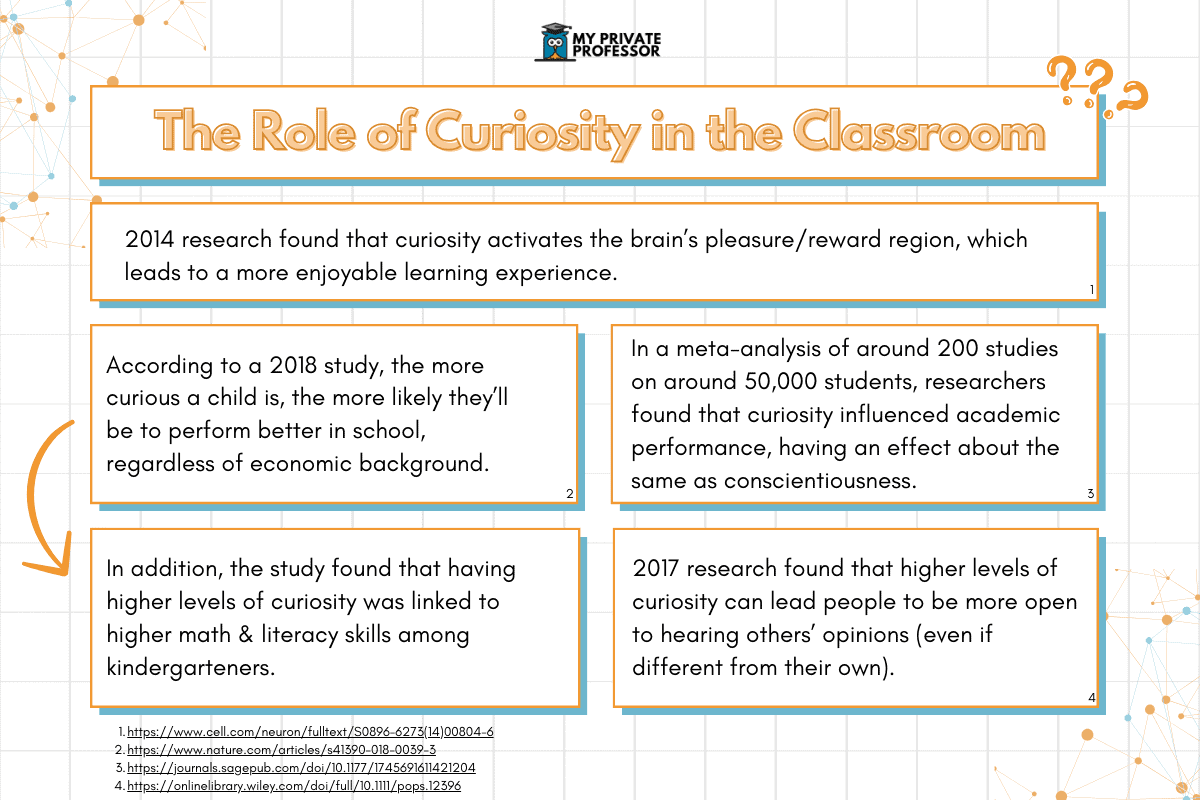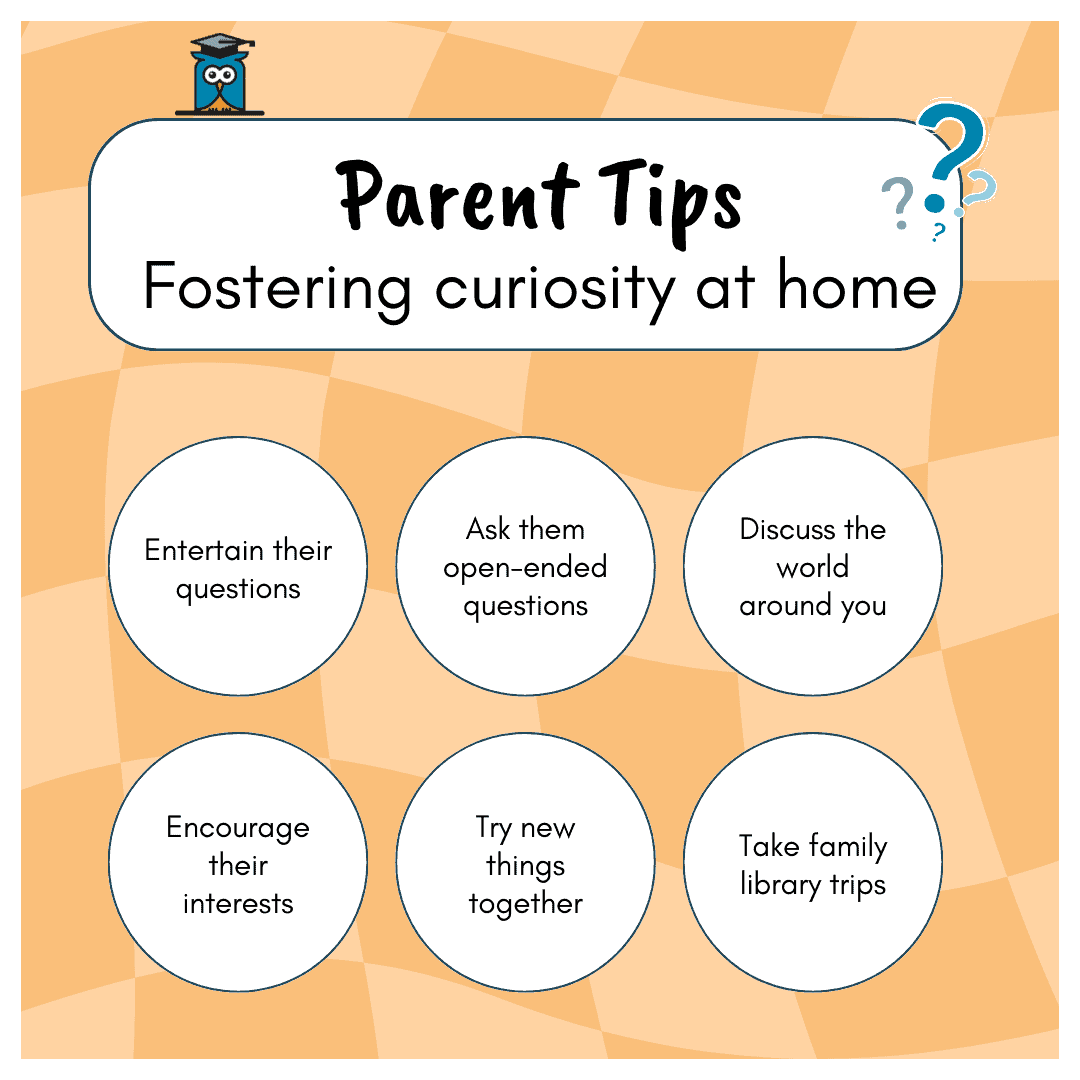Curiosity is like a slow-cooker. When you give it enough time to sit, you can create something amazing. Like pot roast.
Just like a nice walk in fresh air after too much time indoors, curiosity can pull us out of ruts, drag us out of bed, and give us the energy boost we need to dive into that project we’ve been putting off.
Although it’s one of those intangible concepts that can be difficult to put into words, curiosity is nevertheless a powerful force that can lead to greatness.
As it seems, curiosity is a — if not the — gateway to learning. And strengthening this link between curiosity and learning leads to more connectivity, elevated creativity, and creation.
Curiosity is power
When you gain knowledge, you gain power — the power to show up and better navigate an ever-changing world.
(But keep in mind, curiosity isn’t something that you get and then use for a certain amount of time until it runs its course, like a training bra. Curiosity is something that you must nurture regularly to maximize its potential.)
In a way, curiosity acts like a drug. We’ve all experienced the “high” that comes with a curiosity-inspired deep dive down Wikipedia. You feel a rush, maybe even euphoria. You might even feel transported to a different world, usually because of your complete and utter focus.
Your brain on curiosity
When your curiosity is fired up, you experience something similar to what you feel when you do physiologically pleasurable things like exercising, eating, and having a game night with your friends. These things have something in common: they all activate your body’s reward system.
Once this happens, your body releases endorphins, a group of hormones activated during pleasurable activities or in a moment of stress.
Have you ever had a random thought, which subsequently turned into an hour-long Wikipedia rabbit hole on, say, Princess Diana’s murder? What’s happening here is that the world momentarily “falls away,” and your hormones take over, pushing you to indulge in your curiosity.
Of course, this can have consequences. If you’re supposed to be hunkering down, studying for your big chemistry exam, getting caught up in your random trains of thought might not help you get that ‘A’.
But indulging in curiosity also has major benefits. Before we dive into those, let’s understand a little more about why it’s important to nurture curiosity.
Curiosity is an invaluable tool for students
Current research suggests that it’s not only intellect that predicts academic achievement, but intellectual curiosity. To me, this makes sense. 
Yes, students can get good grades even if they’re not insanely curious. But as they venture into higher education and beyond (where there’s often more application-based learning), curiosity can significantly elevate their success and happiness.
Armed with curiosity, students are more likely to engage in divergent thinking, which is the process of generating innovative ideas by looking at several potential solutions. The beauty of divergent thinking is that it allows students to think outside of the bounds of the familiar and as a result, develop a more well-rounded perspective.
And in turn, they can come up with multiple solutions to overcome challenges. The result, then, is that students exercise and strengthen their critical thinking skills and expand their knowledge.
Additionally, curiosity can help students get over their fears and obstacles. Students may create roadblocks for themselves by coming to the conclusion that they’ve learned so much, that at a certain point, it must be that they know enough.
But when students recognize that learning is a journey, and that there’s always inevitably more to learn, they open the realm of possibilities for elevating their learning (and brain).
In fact, research proposes that intellectual humility — realizing there’s a lot you don’t know and still need to learn — and curiosity go hand in hand. And studies have found that intellectual humility may spur learners to try and overcome their challenges.
It’s pretty simple. In the classroom, curious students will be more likely to engage with their classmates and the material at hand. Meanwhile, they’ll be more excited about any given lesson. As a result, they’re likely going to better understand and retain the information.
Curious students learn better
The bottom line is that students who are curious — compared to students who aren’t — learn better. What does that even mean, though — to “learn better?” In a nutshell, it means that you’re absorbing and retaining more information, engaging more, and/or working more productively.
On a neurological level, research has found that curiosity does in fact elevate learning.
For instance, a study in the journal Nature found that greater curiosity was associated with higher math and literacy skills among kindergarteners.
In a 2014 study, researchers had participants rate how curious they were about answering a bunch of trivia questions. At various points, the researchers looked at brain scans to see what was happening when participants were curious.
The researchers found that when participants were curious, they better absorbed and retained information unrelated to the actual question.
The study also illustrated that when participants were curious, there was higher activity in the hippocampus (which is linked to reward and pleasure). This highlights the way in which curiosity makes learning more enjoyable.
Significantly, this shows us that when students are curious, they’re better able to learn about information unrelated to what they’re actually curious about.
Teachers can thus use students’ interest as a medium for sparking curiosity. For example, if students are learning about, say British colonization, teachers can start a conversation among sports-loving students about the sports Colonists brought with them. Then, as the research suggests, students will be more equipped to learn about the class-related information at hand.
Meanwhile, research also highlights that the more we desire to get an answer, the more that answer and surrounding knowledge sticks with us. Again, this shows us that curiosity helps us better remember information.
Does curiosity decline as we age?
When I was very young, I had a tendency to follow up all of my questions with even more questions until there were none left to ask. When I got an answer, I would follow that with, “But why…?” Turns out (as I quickly learned as a day-camp counselor), this is extremely common.
(Researchers in 2007 found that children between 14 months and five years old asked an average of 107 questions an hour!)
Meanwhile, research shows that children are, in fact, more exploratory than adults, and that this exploration can improve learning.
Why is it that when we get to a certain age, we stop asking so many questions?
Some research suggests that this could be due to the fact that as we age, we increasingly accumulate knowledge. So essentially, what might be happening is that the more we gain, the less we seek. While this sounds plausible, I think there are other factors at play.
What blocks creativity?
Growing up, I was constantly going through phases.
For a good couple of years, for instance, I was convinced that I wanted to be an astronaut. (This couldn’t be further from the truth now!)
I also had a major spy phase, inspired by the classic novel, Harriet the Spy. (I even wanted to follow in Harriet’s footsteps and solely eat tomato sandwiches for lunch!) I treasured my spy gear (which, if I’m remembering correctly, consisted of walkie-talkies, binoculars, and a notepad) and spent family barbecues peering down from my parents’ bedroom window with binoculars.
In looking back and wondering why this intense focus seemed to naturally occur, I realized something. At the time of my phases (maybe ages six to eleven), I wasn’t really using screens, other than to watch movies or practice typing on my Dad’s ancient, chunky desktop Macintosh.
And this isn’t to say that screens are the one thing that blocks curiosity. But it seems that it’s probably one of the things that can do it.
Technology and curiosity
Without the constant need or pressure to check to see if anyone had texted, emailed, or called, I was more free to explore my curiosity.
With so many advancements in technology, we’re relying less on our brains, and more on tech. Seemingly this increasing reliance can lead us astray from engaging in our curiosity.
So I think it’s critical to practice mindful screen time. That is, when you’re doing something that would greatly benefit from uninhibited curiosity (a deep research dive, an important project, an interview, etc.), you can likely benefit from reducing the screen distractions around you for that period of time.
This is difficult at first, but by regularly laying out your day with periods of no screen distractions, you can build your screen time into your daily routine.
Technology can also boost curiosity
On a more positive note, technology can promote curiosity. And educators can take the initiative to help identify opportunities for leveraging technology to foster curiosity.
With endless information at our fingertips, students can now conduct extensive research without moving from the comfort of a device.
They can expose themselves to a plethora of ideas and perspectives on any given topic, and as a result, expand their viewpoints.
They can learn about different cultures without physically having to travel somewhere that they might never be able to afford.
They can attend webinars and lectures and pursue their deep fascination with environmental activism.
Fear and curiosity
Fear, or similarly, self-doubt, can also obstruct curiosity.
For humans, fear of failure seems to be a major roadblock to advancing in life. When we have this fear, we’re more likely to stay in our comfort zone, and therefore less likely to explore new information.
For students, fear can come into play when they worry that a topic will be too complex for them, or that they don’t have the skills to thrive in, say, an advanced class.
In order to reverse this effect, it’s important for students to shift their mindset around uncertainty. The thing to remember is that uncertainty is a given. In life, you’ll continue running into uncertainty. And to some extent, it’s exciting to know that there’s always more that you can learn! Each time you are faced with uncertainty, try to remember that although it’s scary, it’s also an opportunity for growth.
Here are a few ways for students to shift their mindset to embrace uncertainty:
- Regularly do things outside of your comfort zone. Afterwards, intentionally take note of how you feel, recognizing that the result probably wasn’t as scary as you might’ve anticipated.
- Read about the importance of adopting a growth mindset and then implement growth mindset-specific practices into your life.
- Practice mindfulness and embrace the present moment.
Judgment and curiosity
Similarly, judgment can restrict curiosity. And it’s incredibly important to recognize this, since judgments are so embedded in our innate thought processes.
Judgment is about making a decision; it’s about using your decision-making skills. And judgements often close the door to receiving and learning. Curiosity is about learning; it’s about opening the door to take in information.
Judgment is a quick fix. It says, “I see what you’re putting out there, but I’m only open to what I already know.” Meanwhile, curiosity screams, “There are so many possible ways of looking at this! What are the different things to think about here?”
The reality is that our brains seem almost hardwired to make judgements. In fact, one study found that participants’ brains immediately determined how trustworthy they deemed someone’s face before they fully perceived the face.
In reality, judgments aren’t innately good or bad in themselves. They’re just tools that help us be more efficient in getting an answer. Furthermore, it’s often easier to adopt a judgmental mindset rather than a curious one. And this is simply because the latter requires more energy and potentially uncomfortable feelings.
But by shifting their mindsets from judgemental to curious, students can empower themselves to explore diverse perspectives and ideas and in turn, expand their mind. Understanding the reality of how our minds work — that we sometimes make automatic judgments — is an excellent first step.
Teachers should nurture their own curiosity, too!
As I’ve learned, students are more likely to thrive in the classroom if they feel comfortable with their teacher. When students feel comfortable any the learning space, they’ll have an easier time focusing, engaging, and thus, learning.
Time and time again, we hear about the importance of listening more than we speak. But really, what this advice is saying is that asking questions is important. Being interested in others is important. When we do this, we form deeper connections with one another. In. turn, we can better understand each other’s goals and motivations and improve our communication.
As such, it’s important for teachers to ensure their students understand that they offer value in the classroom. And asking questions about students’ lives and interests is a simple and effective way to do this.
What can teachers do?
Curiosity is an innately human experience. In fact, a 2018 study found that all participants (kids from grades one through six) exhibited some level of curiosity. The trouble in school, though, is helping students to activate their curiosity about the specific information at hand.
So it’s up to educators to utilize available resources to nurture students’ curiosity.
By making simple modifications in the classroom, teachers can majorly elevate students’ curiosity.
Here are some ways to do spark curiosity:
 Lead with a hook (ask question that you don’t answer until after the lecture)
Lead with a hook (ask question that you don’t answer until after the lecture) - Help students recognize gaps in their knowledge
- Guide students to identify ambiguity
- (Research shows that children as young as four can recognize clashing evidence and understand discrepancies between a prediction and real occurrence.)
- Leverage technology to foster curiosity
-
- Incorporate gamification
- Use digital learning spaces for collaboration
- Create online discussion forums
- Recommend educational podcasts and apps to students
-
Final thoughts
Einstein once said, “The mind that opens to a new idea never returns to its original size.”
Practicing curiosity, it seems, isn’t trivial, but an actual form of critical brain exercise. When you tap into curiosity, you’re literally flexing and strengthening your brain. And as a result, you’re building yourself up to be a better, more knowledgeable version of yourself.
In order to see a thriving classroom, it’s thus important for both teachers and students to tap into curiosity.
You can think of the classroom and its inhabitants, in a similar manner to how we talk about holistic health. In order to see equilibrium and harmony in education, we must consider all aspects of the student. That is, not only their skills and intellect, but also, their curiosity.







